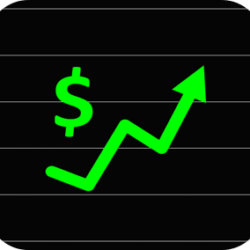What is Quantitative Trading?
How does it differ from Algo Trading?
&
What do you need to develop your own Quantitative Trading solutions?
What is Quantitative Trading?
Quantitative Trading (a.k.a. Quant Trading) is the process of identifying trading opportunities by using computer algorithms that are developed based on mathematical models and historical market data. These trading techniques are mostly used in short term trading, and commonly utilized by hedge funds and high frequency trading firms.
While some of these Quantitative Trading techniques are built based on simplistic mathematical models, some others involve very complex mathematical modelling by using large data sets to be able to identify trading opportunities.
Quantitative Trading vs. Algo Trading: What is the difference?
Algo Trading is a subset of Quantitative Trading that uses a software program that executes buy & sell orders based on strictly defined rules in the designed algorithm of the software program itself. Such algorithms are mostly used in high frequency trading and no human interaction is involved in the trading execution phase. The whole process of buying and selling securities is automated.
Apart from developing trading strategies by using advanced mathematical models, Quantitative Trading involves conducting research and analyzing historical data for finding trading opportunities to make profit. Once the trading strategy is built, trades can be executed manually, or automatically (e.g. by utilizing algo trading techniques).
Can I develop Quantitative Trading solutions on my own?
Yes, it is possible. But you need a lot of things in place before you can start.
First, you need to have access to market data in a format that you can use when developing your Quantitative Trading strategies. Since Quantitative Trading strategies are mostly developed by using huge amount of data, you need to have access to machines with enough computational power that can handle the amount of stock market data you will be using when developing your trading strategies.
Next, apart from the mathematical knowledge that you need to be able to build and test your statistical models, you also need programming experience to be able to create your own systems.
There is nothing that says that Quantitative Trading strategies cannot be simple but if you want to develop more sophisticated ones (e.g. by using the techniques of Artificial Intelligence), you need to learn how to develop and program such solutions too.
At the end of the day, Quantitative Trading is not a goal by itself, it is rather a sort of tool that you can use to develop trading strategies. If developing your own Quantitative Trading strategies is not an option, Share Predictions mobile app offer AI powered short term predictions for the price movement of all common stocks from US stock markets. These predictions are calculated by using advanced mathematical modelling and aims to provide an algorithmic prediction on whether the price of a given common stock is expected to go up or down in the coming month. Predictions are renewed at the beginning of each market day as we collect more data from markets, and are made available to users in the beginning of the market day.
Beside AI powered short term price movement predictions, Share Predictions also offers premium stock analysis tools. You can use the Stock Screener function to create your own portfolio, the Dividend Tracker function to follow upcoming dividend payments of stocks, and also analyze stock charts, technical indicators, company financials, dividend history and company specific news at one single place to be able to do a proper analysis for each common stock when determining which stocks to include in your trading portfolio. Share Predictions mobile app is available in both Apple App Store and Google Play Store.





